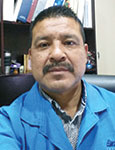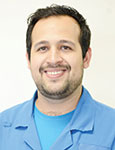An In-House Solution to Odd-Form Part Inspection

 When commercial AOIs were not up to the task, a little internal ingenuity saved the day.
When commercial AOIs were not up to the task, a little internal ingenuity saved the day.
While there is great debate in the quality community as to who first made the observation that visual inspection by humans is not 100% effective (both W. Edwards Deming and Dr. Joseph M. Juran have been given credit) and even some debate about the true effectiveness rate (is it 75%? 80%? 85%?), all agree it is inefficient and error-prone. Yet, automated optical inspection is often deemed not cost-effective for relatively simple processes in many factories.
One area that is often problematic for electronics manufacturing services providers is odd-form part through-hole insertion. Through-hole odd-form parts continue to be used when a part’s weight or need for a more robust solder joint makes that level of interconnection more reliable. Transformers, large capacitors, diodes, relays, connectors and pressure sensors are few examples of parts that are often still packaged as through-hole. Manual assembly, like manual inspection, is prone to variation and associated defects, particularly issues such as misaligned parts, missing parts or wrong parts. Odd-form parts are typically of a size or shape that makes automated insertion methods impractical.
SigmaTron’s facility in Chihuahua, Mexico, performs high-volume assembly of products, which includes printed circuit board assemblies (PCBAs) with paced, manual assembly requirements driven by odd-form parts. The engineering team wanted to automate the visual inspection process of that segment of production. Commercially available vision systems were cost-prohibitive, and in most cases could not be customized to inspect the full range of parts that needed inspection. So, the team decided to create its own inline inspection system, utilizing in-house process engineering, machine shop resources, technicians and test engineering development personnel. The engineering team developed a system using an off-the-shelf camera system and mechanical components combined with internally developed software and fixturing for each board type.
A pilot system was developed and tested in the fourth quarter 2018. The team made improvements after finding that larger PCBAs required more cameras, and the illumination system required adjustment to compensate for reflections off the PCB substrate. A barcode scanner is being added to facilitate automated test data capture. Fine-tuning was required to achieve consistent identification of wrong polarity capacitors, since polarity markings on some were difficult for cameras to see. Once the improvements were added, the only type of defect the system couldn’t identify was lifted parts. Four systems have been built and deployed in production. An additional four are scheduled to be installed later in 2019.
The systems have been installed pre-wave solder, so insertion defects can be identified and corrected prior to the components being soldered to the board. Each line’s conveyor system runs through the machine, and the inspection timing is paced to line output goals, so inspection adds minimal time to the process.
An operator next to the system provides real-time feedback to operators further up the line if defects are found so immediate corrective action can be initiated.
From a Lean perspective, the system helps eliminate variation because it identifies issues prior to soldering and eliminates unnecessary processing time and added thermal cycles associated with rework.
The results provided by automating visual inspection were so positive, the team built a modified version of the system for SigmaTron’s facility in Elk Grove Village, IL. That production area’s volumes are much lower, and, in this case, the system is table-based and used post-wave.
Use of the system in Chihuahua has reduced rework by 90%. It takes less than half the time of a human inspector to inspect each PCBA. In EGV, gauge R&R validation tests indicated it is inspecting with 100% accuracy. It is also about 5% of the cost of third-party systems, which makes it cost-effective to use at multiple points in production processes with minimal adjustments.
The result is an automated vision solution that provides the required customization capability at a cost point that makes deploying systems at multiple areas in production cost-effective. Throughput has been improved, since inspection time has been significantly reduced. Most important, the inefficiencies and thermally driven defect opportunities created by rework have been significantly minimized in operations using the systems pre-wave.
is engineering superintendent at SigmaTron International Chihuahua, Mexico (sigmatronintl.com); gerardo.ruelas@sigmatronintl.com. is test software development engineer at SigmaTron.




